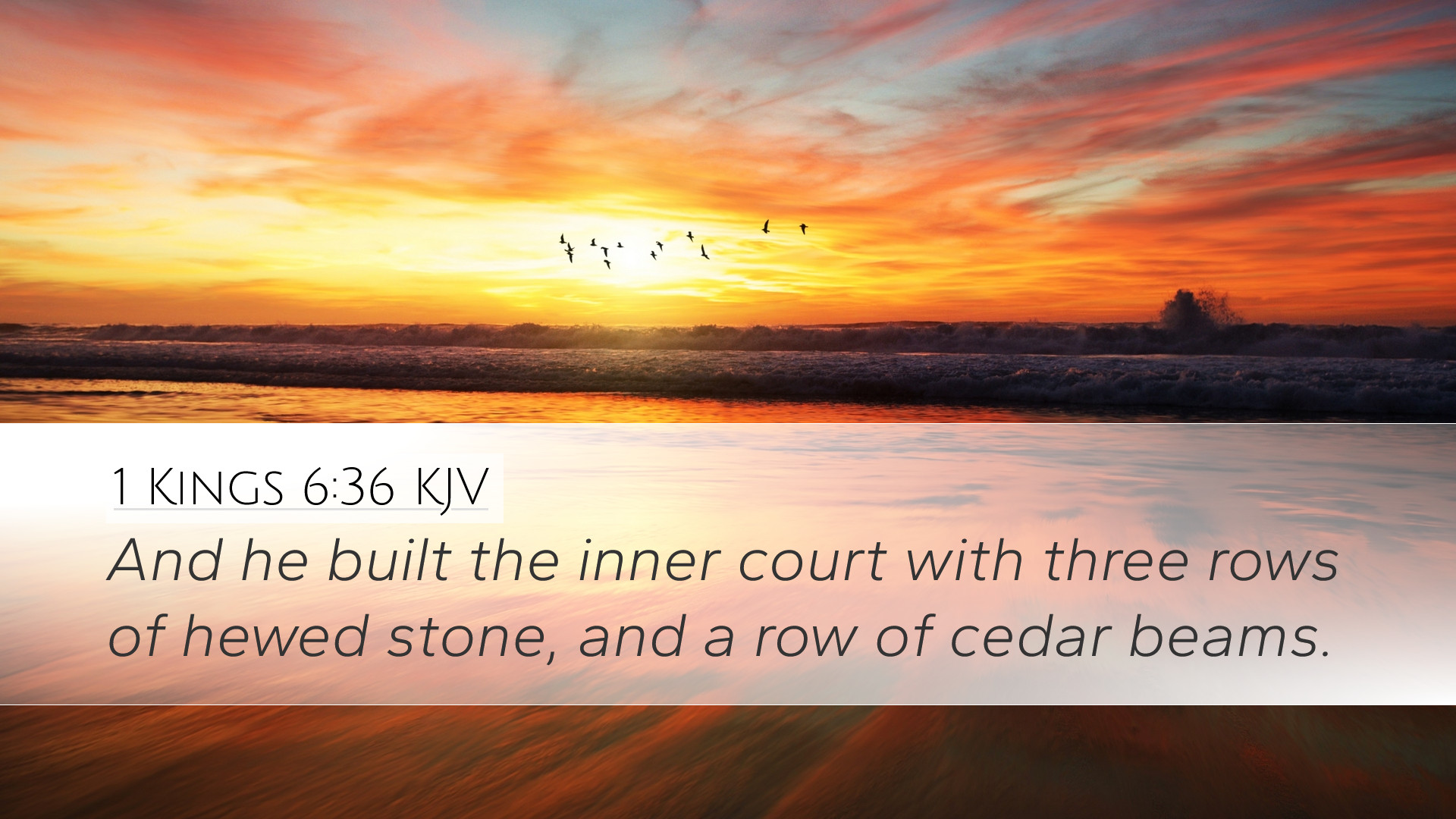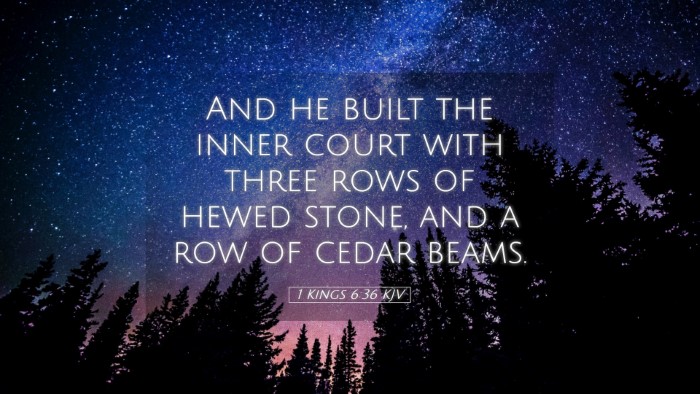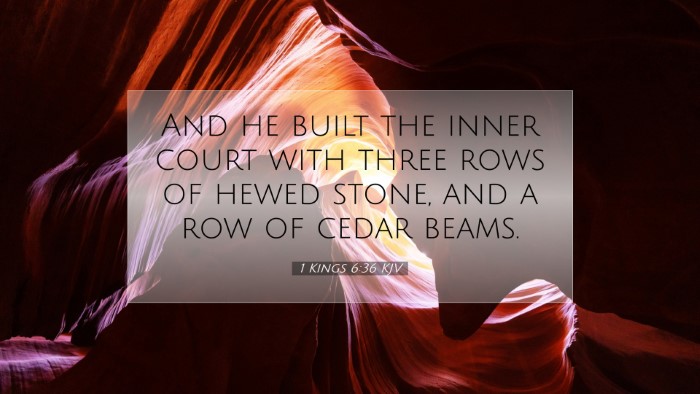Commentary on 1 Kings 6:36
1 Kings 6:36 states: "And he built the inner court with three rows of hewed stone, and a row of cedar beams." This verse concludes the description of the Solomon's temple and introduces us to the architectural grandeur of the place dedicated to the worship of the Lord. Below is a detailed commentary compiled from various public domain sources.
General Overview
The context of 1 Kings 6 is the account of the construction of Solomon's Temple, which was a monumental event in the history of Israel. This temple not only symbolized the presence of God among His people but also reflected the glory and majesty of the God they served. In this particular verse, the focus shifts to the distinct features of the temple, specifically the inner court.
Architectural Significance
The inner court of the temple, as mentioned, consisted of three rows of hewed stone and was elegantly adorned with cedar beams. This architectural detail is significant for several reasons:
- Durability: The use of hewed stone suggests a permanence that is fitting for a place of worship authorized by God Himself.
- Aesthetic Appeal: Cedar wood not only holds a symbolic significance in biblical texts representing strength and resilience but also adds a natural beauty that enhances the temple’s grandeur.
- Symbolism: The combination of stone and cedar can be understood as a metaphor for the union of the divine (stone - unyielding and eternal) and the earthly (cedar - life and growth).
Theological Implications
This verse offers rich theological insights. Matthew Henry comments on the significance of the structure as a representation of God's dwelling with man. The description of the inner court sets a stage where God would meet His people, underlining the theme of divine presence throughout the narrative of the temple construction.
Moreover, Albert Barnes notes that the **inner court** served as a space that was more intimate than the outer court, suggesting a deeper level of engagement with the Lord. The arrangement of the temple, therefore, implies that worship requires not just a physical structure but also a prepared heart.
Spiritual Preparation and Worship
As theologians, we must also draw practical lessons from this construction. Adam Clarke notes that before approaching the Holy space, the priests and worshippers had to prepare themselves adequately. The inner court was possibly seen as a threshold, requiring purity and dedication, emphasizing the holiness of God.
This preparation for worship in the temple should echo in our modern practices. Pastorally, it emphasizes the need for congregants to come before God with reverence, recognizing that worship is both a privilege and a responsibility. It raises the question: How are we preparing our hearts and lives to enter into God's presence?
Historical Context and Construction Insights
From a historical standpoint, we learn that the construction of the temple took place during a period of relative peace and prosperity under Solomon’s reign. The resources extracted from Lebanon and the skilled labor available signify not merely a temple building project but rather a reflection of Israel's identity as the chosen people of God. Matthew Henry and others emphasize the necessity of using the best materials to honor God within worship practices, which should remain applicable today.
Conclusion: A Lasting Legacy
In summary, 1 Kings 6:36 encapsulates more than mere architectural description; it serves as a profound reminder of God's desire to dwell among His people. The inner court with its intricate design and quality materials symbolizes the reverence due to God and sets a precedent for future generations regarding worship and sanctity. As we reflect upon this verse, may we be inspired to cultivate spaces in our lives—in our churches and our hearts—that honor God and embody the principles of holiness and dedication found in Solomon’s temple.


